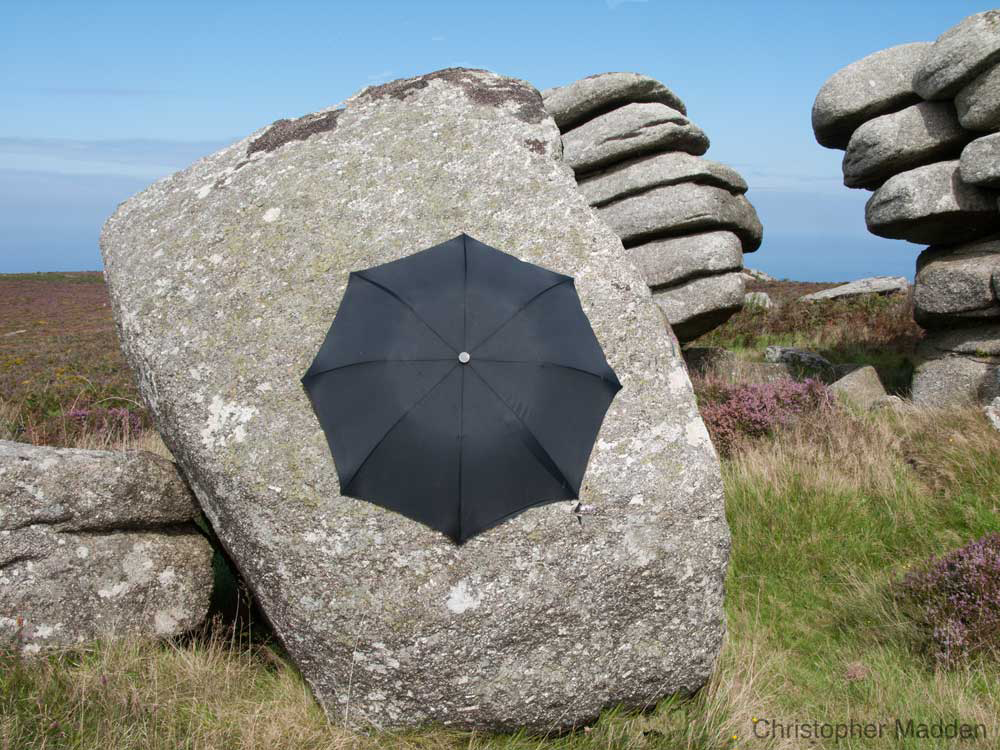
Limpet
Umbrella in landscape, Zennor, Cornwall. September 2018
A work consisting of an umbrella clinging limpet-like to a granite rock on a hilltop in Cornwall.

A work consisting of an umbrella clinging limpet-like to a granite rock on a hilltop in Cornwall.
post content
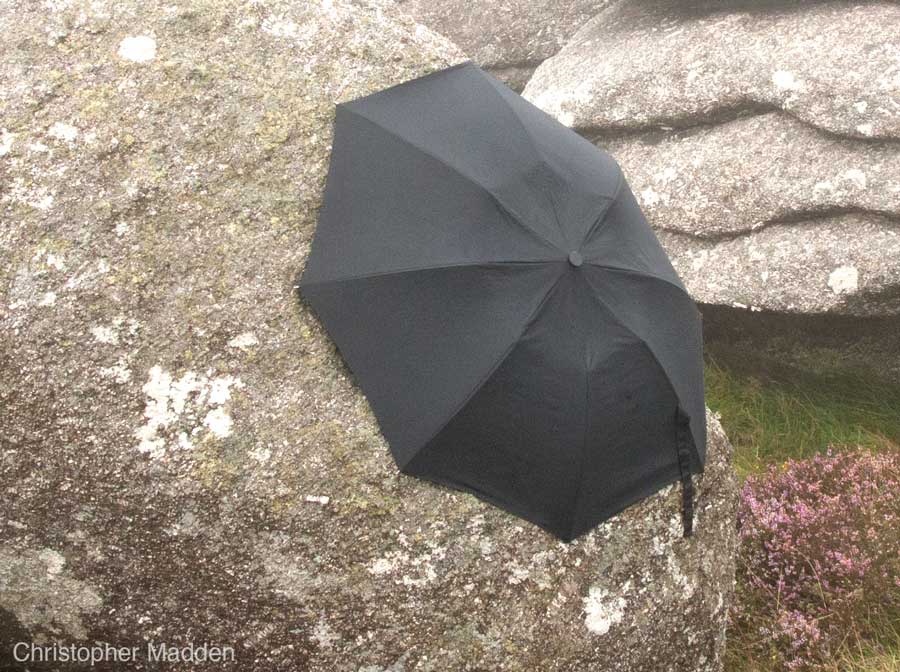
A work of environmental art consisting of an umbrella clinging to a granite rock on a misty hilltop in Cornwall.
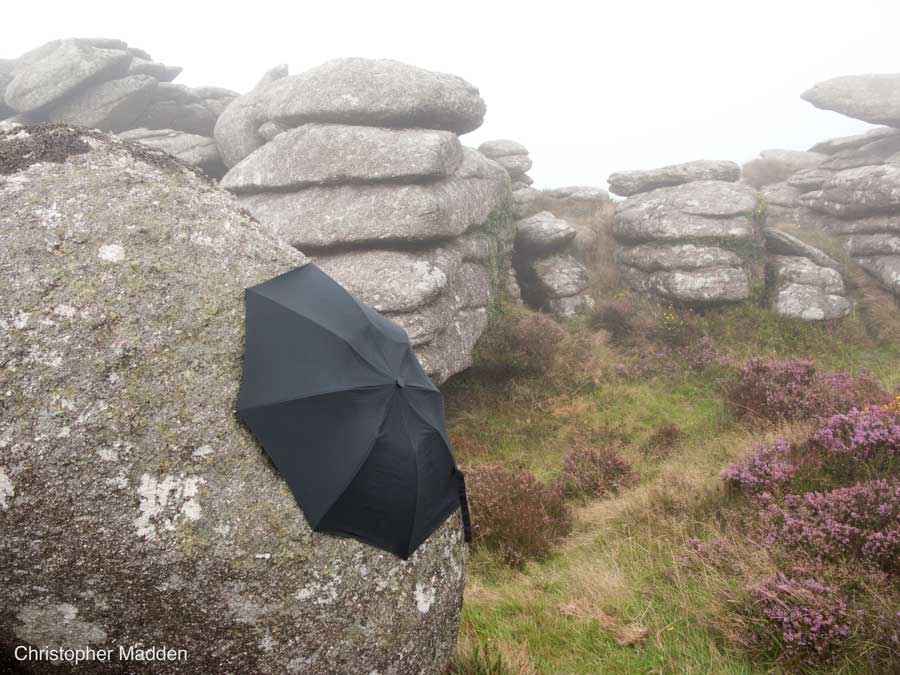
The umbrella in this work of contemporary environmental art or land art can be seen as representing shelter. Perhaps it’s shelter from bad weather caused by climate change or global warming. Umbrellas after all are primarily designed to provide shelter from the weather. The shelter provided by the umbrella in the face of climate change is however woefully inadequate. An umbrella after all is a very flimsy structure.
post content
A video of an environmental art installation in the countryside that comments on the behaviour of some dog walkers.
The work features an avenue of discarded dog pooh bags.
The work was inspired by the experience of going on many walks in the countryside and coming across discarded black plastic dog poo bags: sometimes hidden, sometimes in full view. There’s a theory that the dog owners leave them there to be picked up on their return, however, many of them don’t do it.
The work was created near St Ives, Cornwall.
Update, 2021. This work has taken on more relevance since the start of the Covid-19 pandemic, as more people purchase more dogs, which in turn produce more excrement. The fact that some of the new dog owners are quite casual about their ownership responsibilities is reflected in a marked increase of discarded dog poo bags.
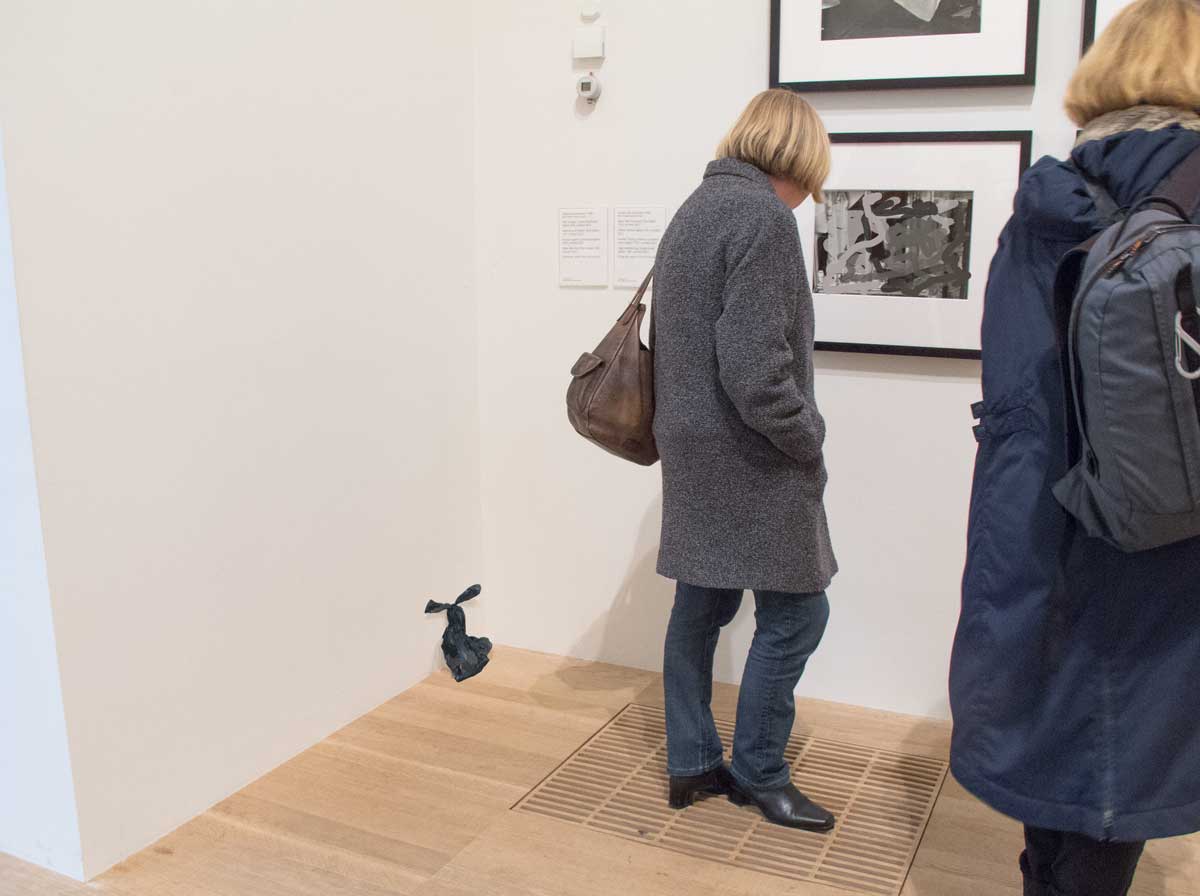
The image above shows a related dog poo installation in an art gallery (visualisation).
post content
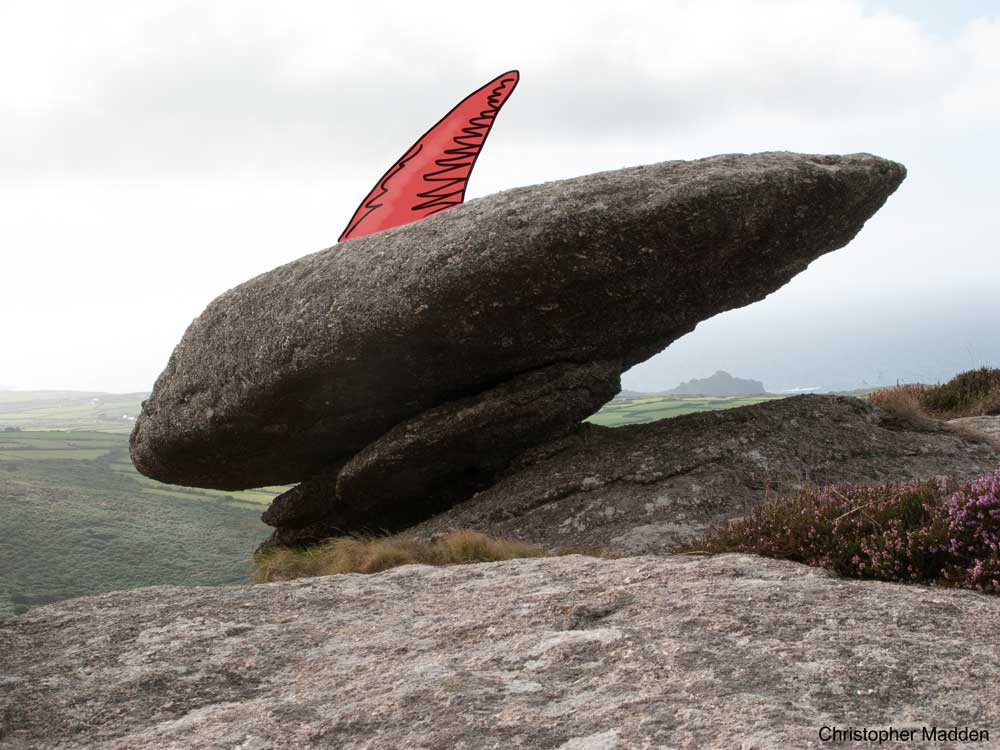
A photograph of a natural granite rock formation with a drawing of a fin-like object added to the photograph as though it is attached to the rock.
The rock formation in the photograph is on the Penwith peninsula in west Cornwall, a few miles from St Ives. The large rock on which the fin is drawn is a rocking stone, known locally as a Logan stone. The stone is said to move slightly when pushed correctly.
The image is a finished artwork, despite the fact that it resembles a concept study for a sculpture in the landscape. The drawing of the fin is deliberately inconsistent in terms of photographic realism with the rest of the image.
Having said that, I’m not ruling out the possibility of an actual sculpture.
post content
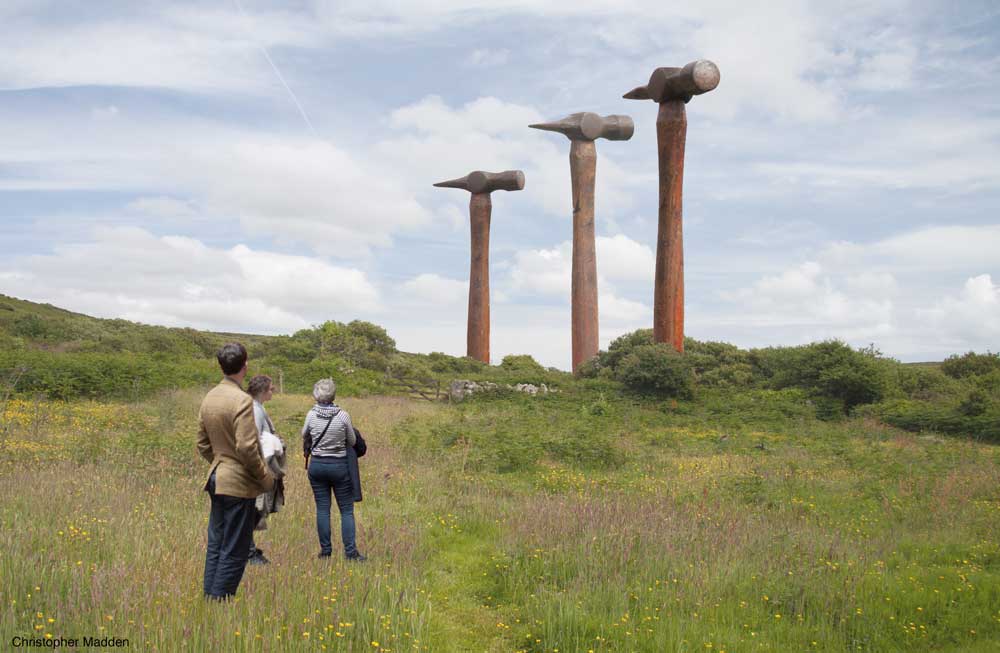
A visualisation of a concept for a sculpture in the landscape.
The landscape in the photograph is the Penwith peninsula in west Cornwall.
The hammers are meant to project a sense of overbearing force, the fact that there are several of them possibly implying organised force (such as military force). Hammers, to me, have a certain anthropomorphic quality to them, suggesting a degree of human identity – a long thin body with a head at the top. The blank facelessness of the heads of the hammers in this image suggest a mindless power (I’ve done other works in which hammers have faces).
post content

One of my temporary sculptural works or interventions in the landscape near St Ives, Cornwall.
There’s a tendency for land art to be either very ephemeral and transient (such as Andy Goldsworthy’s work with leaves) or very permanent (such as Robert Smithson’s Spiral Jetty). The photo below shows my work becoming very ephemeral indeed by floating up off the ground as if defying gravity. The photo was achieved by taking several photos of the wooden batons being held in the air and then photoshopping the holder of the batons out of the picture.
Land art also has a tendency to involve circles, probably because of the circle’s links to some spiritual concepts (such as the circle of life, yin and yang, the cosmos etc). Spirals and other sinuous or organic forms are also common for similar reasons. I’ve chosen to go the other way with this work, employing very mechanical straight lines (as a comment on the common phrase “There are no straight lines in nature”) and primary colours that in nature are normally only seen in small concentrated quantities in such places as flowers and birds’ feathers.
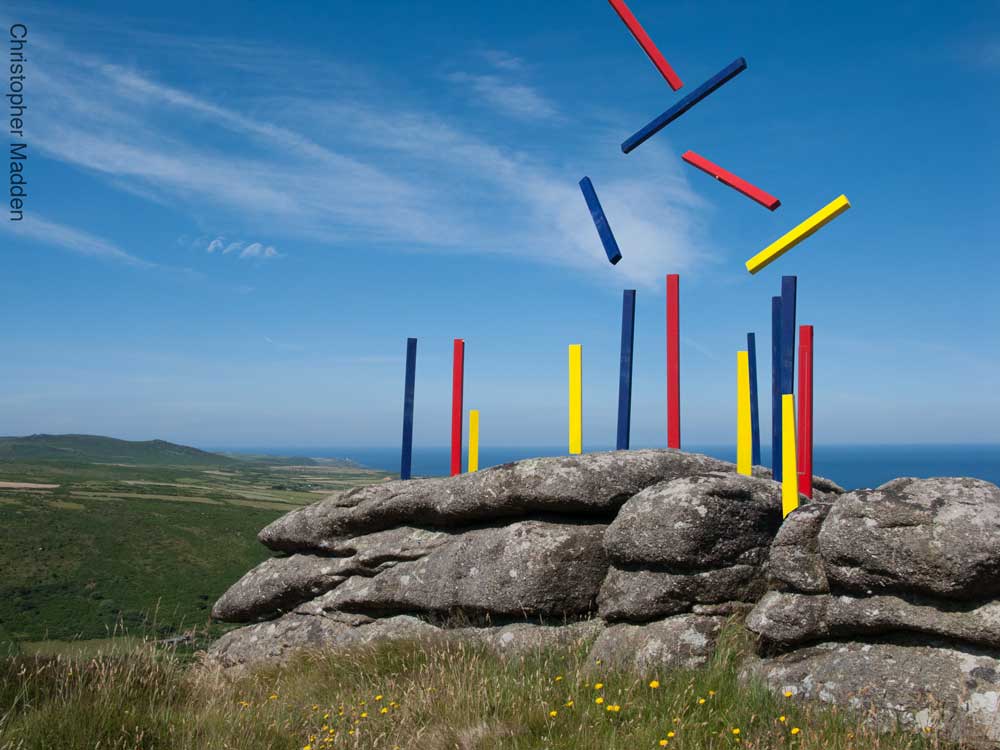
post content

Land art sculpture composed of lengths of painted wood battens (the type of wood commonly used in building construction).
The sculpture was created by positioning a small number of battens in the landscape, photographing them, repositioning them, rephotographing them and then merging the photographs.
As a result the work has an interesting relationship with time. The sculpture never existed in its entirety as depicted in the photograph, each batten only being in position for long enough to take a photograph. The sculpture only takes on its final form when the twenty-five minutes that it took to position and photograph the battens are compressed into a single instant.
A work of transient land art near St Ives,Cornwall: an intervention in the landscape, or art in the environment. The wood battens are about a metre long.
post content
A video of a field of buttercups that contains a hard-to-see object near the centre-left.
The object is revealed at the end of the video.
The video is on a recurring theme in my work – an investigation into perception, reality and illusion.
The video was taken behind my house at Lower Rosemorran, Zennor, in Cornwall.
Spoiler alert – the nature of the object in the video is revealed in the next section.
The scene in the video contains, on the ground amongst the grass and buttercups, a square mirror. The mirror is hard to see partly because of the distracting proliferation of buttercups, but mostly because the mirror is positioned so that the light from the sky doesn’t create give-away shadows or highlights (buttercups that are reflected in the mirror can look abnormally lit compared with the rest of the buttercups if the angle of the light is incorrect).
Below is a photograph of the wider field in which the work took place.
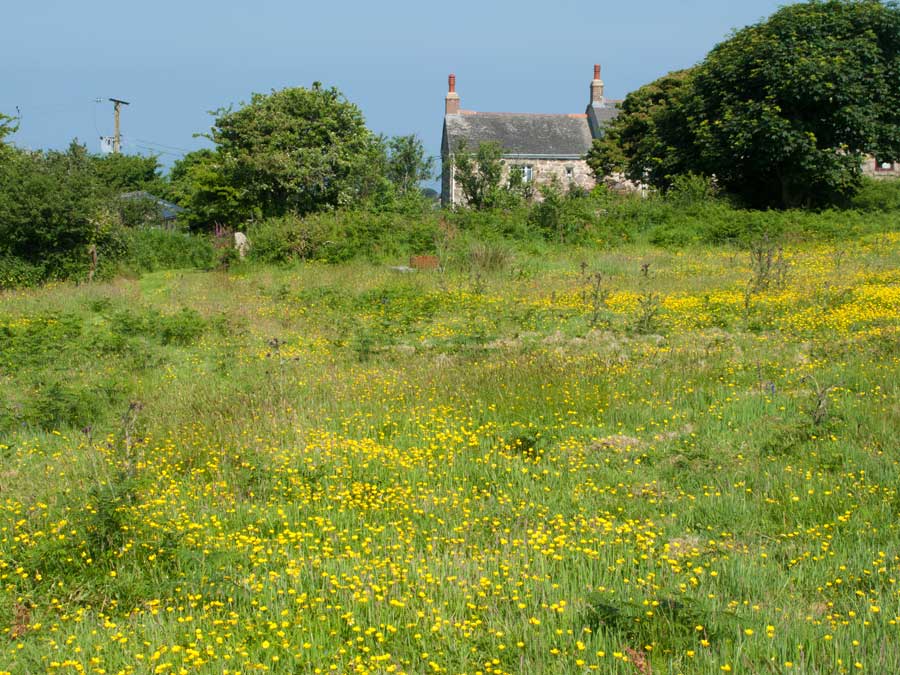
The work is filmed in an almost cliched, very peaceful and calming field full of spring flowers, which to me makes a nice setting for a work that at its most pretentious can be interpreted as being a prompt for questioning the nature of reality. At its least pretentious however, it’s just a nice visual joke.
Mirrors and reflections have been a common features of my work for many years, with the first probably being this artistic experiment from about 1970.
post content
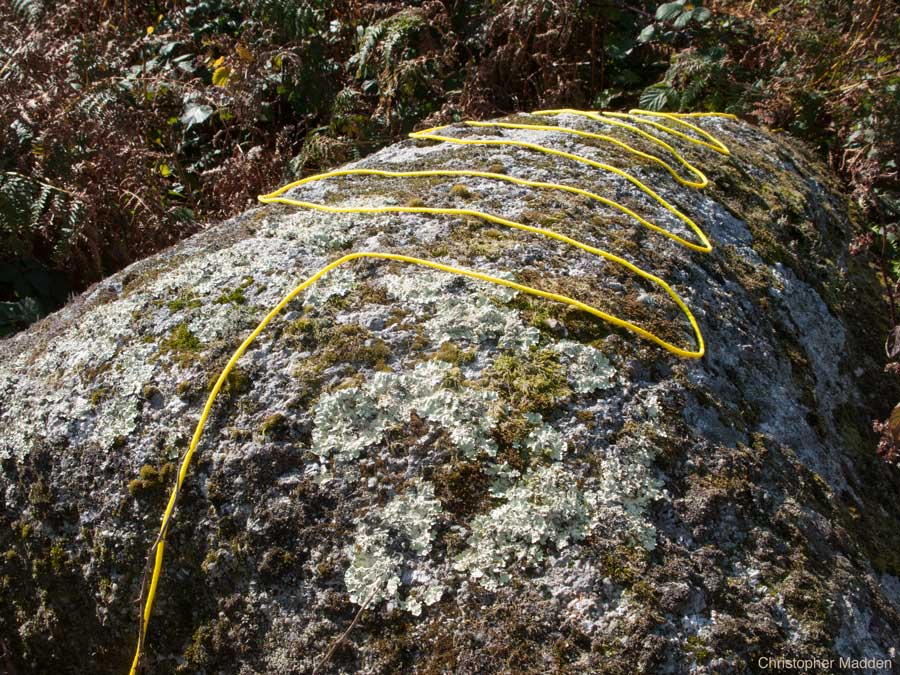
I’ve been producing art dealing with environmental concerns since the 1970s.
The simplicity of construction of this piece is important. The observer will hopefully notice the almost total lack of endeavour required to create the work, while also noticing the (hopefully) relatively high aesthetic payoff as a result of that endeavour.
A lot of land art and other art in the environment strive to use only natural ingredients in the composition of the art, good examples being the work of Richard Long and Andy Goldsworthy. This work however consciously uses artificial material in the form of nylon paracord.
In the work the placing of brightly coloured plastic into the environment refers partly to humanity’s imposition of artificiality onto the natural world. This is partly a message about the despoiling of the environment by our endeavours. The fact that the nylon cord has been simply laid on the boulder (which took the effort of a whole three minutes) helps to reinforce this message, as the cord acquires qualities associated with the detritus of our instant gratification throw-away consumer culture. The fact that the cord is plastic reinforces this further. However, the brightly coloured plastic actually looks quite pleasing on the rock, so the work is also saying that humanity’s imposition of artificiality onto the environment may have a positive side to it, at least to us (but also that just because something looks nice doesn’t necessarily mean that it is).
In fact, where would we be without the artificiality that we impose on the environment? Hence some of the ambiguity in this piece.
The rock is on low heathland behind my house at Rosemorran, Zennor, near St Ives, Cornwall.
post content
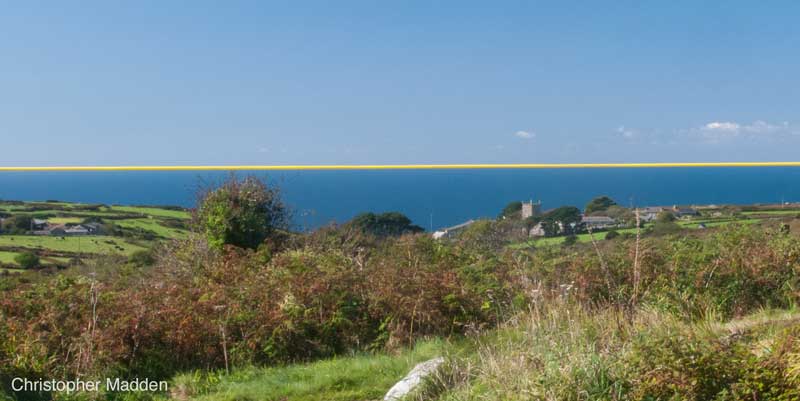
A photograph of a length of brightly coloured plastic cord stretched horizontally so that it coincides exactly with the horizon.
This is an unmanipulated photograph.
The work is partly about the all pervasive presence of plastic in our lives and the environment, with the piece of plastic cord se. he horizon created by the sea links the cord with the plastic pollution that is present in vast quantities in the oceans.
As well being a metaphor for the plastic pollution in the oceans, the cord also signifies that plastic is in many ways a very useful and pleasing substance (without which our modern world wouldn’t be able to function). This is indicated by the fact that the cord creates a very pleasing aesthetic effect. The major problem with plastics is the complex molecular structures that are created during the creation of the plastic that mean that they decompose very slowly. If this problem is solved the plastic problem will be greatly reduced (although of course it will still be a problem, along with all of the other problems based on consumerism that we are inflicting on the planet).
The work also exists at a purely aesthetic level, with an appeal generated solely through the juxtaposition of the horizon and the plastic cord.
The work was created overlooking Zennor, Cornwall, UK.
post content

A lot of land art and other art in the environment strives to use only natural ingredients in the composition of the art. This work however consciously uses artificial material in the form of a length of brightly coloured fluorescent plastic nylon cord.
The simplicity of construction of this piece is important. The cord is draped over the branch of a tree and is pulled tight downwards to create two perfectly straight, vertical, parallel lines.
The work is meant to create slightly confused emotions in the observer. In the relative darkness of its woodland setting the cord stands out as a source of brightness, and the two parallel lines are aesthetically pleasing amongst the twisted shapes of the branches and the leaves.
However, the cord is bright because it’s unnatural fluorescent plastic, and the parallel straight lines of the cord are similrly unnatural and are partly a reference to humanity’s need to impose order on nature.
This work was created at the same time as most of the other paracord works on this site.
post content